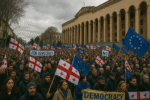The streets of Serbia have erupted in student-led protests after a tragic train disaster. Accusations of government corruption have fueled public outrage, turning grief into organized resistance. In both Belgrade and Novi Sad, demonstrators have blocked roads and bridges, demanding accountability. Many argue the tragedy was preventable and the result of systemic graft.
The disaster has become a flashpoint for wider dissatisfaction with government mismanagement. Protesters point to years of infrastructure decay and official negligence as proof that the incident is part of a broader pattern. What began as a student movement has quickly expanded, resonating with citizens frustrated by corruption and poor governance.
Momentum is growing. Student organizations, civil society groups, and independent journalists are amplifying calls for transparency and justice. On social media, activists spread real-time updates, challenge state-controlled media, and rally new supporters.
Authorities have responded with dismissals, legal threats, and police crackdowns. Instead of calming tensions, these actions have intensified public anger. Many Serbians now view the government as focused on survival rather than reform.
This wave of protests offers a case study in resistance mobilization. It shows how local grievances can evolve into mass demonstrations and how repression often fuels, rather than quells, dissent. The Serbian protests highlight the powerful intersection of youth activism, corruption scandals, and public demand for accountability in shaping political change.
The Role of Grievances in Mobilization
At the core of the Serbian protests lies a deep grievance: corruption and negligence that have cost lives. The tragic train disaster has become a powerful symbol of broader governance failures. Many citizens now view it as another example of an indifferent and self-serving political elite.
History shows that specific incidents often serve as catalysts for mass mobilization. The Triangle Shirtwaist Factory fire in 1911 led to sweeping labor reforms in the United States. In Lebanon in 2019, a proposed tax on WhatsApp calls ignited nationwide protests. These examples demonstrate a pattern: when one event embodies long-standing grievances, it can galvanize a population into sustained resistance.
In Serbia, student organizers have framed the railway disaster as evidence of systemic mismanagement. They argue it reflects deeper issues of corruption, regulatory failure, and cronyism. This framing has turned a single tragedy into a rallying point for demands targeting governance reform, infrastructure oversight, and anti-corruption measures.
Social media and independent journalism amplify this message. Both have exposed inconsistencies in the government’s response and mobilized support well beyond the student population. As tensions escalate and authorities struggle to contain dissatisfaction, the movement has reached a critical juncture.
The outcome remains uncertain. The protests could fade under government pressure or evolve into a long-term campaign for accountability and reform. What is clear, however, is that the train disaster protests in Serbia highlight how systemic corruption and negligence, when symbolized in a single event, can ignite a nationwide movement.
Key Mobilization Factors:
- Perceived Injustice: The train disaster symbolizes government corruption, making it a unifying issue.
- Emotional Catalysts: The loss of innocent lives adds urgency and moral weight to the protests.
- Pre-existing Networks: University student groups and activist organizations provide the infrastructure for rapid mobilization.
- Symbolic Targets: Government institutions and public spaces become focal points for resistance.
Barriers to Participation: Overcoming State Suppression
Resistance movements often face significant obstacles, and the Serbian protests are no exception. Governments seeking to maintain control frequently deploy a range of suppression tactics, from direct police crackdowns to more insidious forms of coercion, such as media restrictions, legal intimidation, and economic reprisals against activists. In Serbia, authorities have responded to the protests with a combination of force and strategic disinformation, attempting to delegitimize the movement by labeling it as foreign-influenced or orchestrated by political opposition groups. Arrests, heavy-handed policing, and surveillance have been employed to instill fear among demonstrators, discouraging mass participation and fragmenting organizing efforts.
However, history has shown that resistance movements can adapt and persist despite these barriers. Protesters often develop counterstrategies to sustain momentum, such as decentralized leadership structures that make it harder for authorities to dismantle the movement. In Serbia, activists have relied on encrypted messaging apps to coordinate actions, circumventing traditional media blackouts and ensuring that protest logistics remain fluid. Independent journalists and social media influencers have also played a crucial role in countering state propaganda, exposing government misconduct, and keeping public attention focused on the movement’s demands. Additionally, international human rights organizations have begun to scrutinize the Serbian government’s response, putting external pressure on authorities to respect civil liberties. These evolving dynamics demonstrate the resilience of resistance movements and highlight how, even in the face of repression, determined organizers can find innovative ways to sustain their struggle for justice and accountability.
Common Barriers to Participation:
- Fear of Repression: The threat of arrests, violence, or academic penalties for student activists.
- Media Control: Government-aligned media outlets framing protests as unlawful disruptions.
- Logistical Challenges: Restrictions on public gatherings and social media censorship.
Despite these challenges, Serbian protesters have leveraged alternative communication methods, such as encrypted messaging apps and independent media, to sustain momentum.
The Repression-Mobilization Cycle: A Historical Perspective
A defining feature of modern resistance movements is the repression-mobilization cycle. When governments rely on excessive force to suppress dissent, they often create the opposite effect. Instead of ending protests, repression radicalizes previously non-political citizens and drives more people into the movement.
Crackdowns create a sense of shared victimization among demonstrators. This strengthens commitment to the cause and increases public sympathy. When images of police brutality or wrongful arrests spread on social media, they act as rallying cries. People who were hesitant to engage may now feel compelled to join, believing silence is no longer an option.
This pattern is not unique to Serbia. In Iran’s 2022 protests, triggered by the death of Mahsa Amini, violent repression only intensified public outrage and expanded participation far beyond the original activist core. Similarly, during the U.S. Civil Rights Movement, images of peaceful protesters attacked by police dogs and fire hoses in Birmingham in 1963 shocked the nation. Those images accelerated public support for desegregation and civil rights reforms.
In Serbia, the government’s heavy-handed approach—through arrests, intimidation, and media suppression—risks fueling the same backlash. Each attempt to silence dissent strengthens protesters’ claims and reinforces grievances. As the repression-mobilization cycle unfolds, it becomes a test of endurance between state power and popular resistance.
Case Studies in Repression Backfiring:
- Belarus (2020-2021): Mass protests against election fraud grew in response to police brutality.
- Hong Kong (2019): The extradition bill protests escalated after aggressive police actions.
- Egypt (2011): The Arab Spring movement intensified after government crackdowns.
In Serbia, the government’s response will determine whether protests fizzle out or escalate into a sustained movement. Heavy-handed repression may catalyze broader opposition.
The Role of Media Coverage in Resistance Success

The media plays a crucial role in shaping public perception of resistance movements. It influences both domestic opinion and international response. In Serbia, independent journalists and international news outlets have tracked the protests closely. Their coverage challenges state-controlled narratives and amplifies the voices of demonstrators.
When mainstream national media, often influenced by the government, downplays or distorts events, alternative media becomes essential. Citizen journalists, livestreamers, and social media activists step in to document events in real time. Their efforts ensure that images and testimonies from the ground reach both domestic and global audiences.
International outlets such as Reuters, BBC, and The Guardian have also played a key role. By bringing global attention to the Serbian protests, they place added pressure on the government to respond with transparency rather than repression. Protest footage spreading across Twitter, Instagram, and Telegram has mobilized local support while also drawing reactions from foreign policymakers, human rights groups, and advocacy organizations.
When external actors condemn government crackdowns, the stakes rise for Serbian authorities. They find it harder to dismiss the demonstrations as a fringe movement. The ability of resistance movements to control their narrative, counter disinformation, and remain visible in the media landscape often determines their success. This dynamic underscores why many governments attempt to suppress independent reporting during periods of unrest.
Media Strategies Used by Protesters:
- Livestreaming and Citizen Journalism: Bypassing traditional media filters.
- Hashtag Campaigns: Raising global awareness via platforms like Twitter and Instagram.
- International Advocacy: Seeking support from foreign human rights organizations.
When international media focuses on a protest movement, it pressures governments to respond with reforms rather than repression.
What Comes Next?
The Serbian student-led protests reveal the core dynamics of modern resistance movements: grievance-driven mobilization, barriers to participation, and the cycle of repression and response. These demonstrations go beyond a single incident. Instead, they represent widespread frustration with systemic corruption, government negligence, and the lack of accountability in Serbia’s leadership.
The future of the movement depends on several factors. The resilience of student organizers, the strength of public support, and the government’s response will determine its longevity. If authorities escalate repression, the protests could grow in intensity. Larger segments of society may see crackdowns as an attack on fundamental freedoms. By contrast, if the government offers calculated concessions, it may temporarily defuse unrest while preserving the same corrupt structures that triggered the uprising.
Whether these protests achieve tangible reforms or fade under government pressure remains uncertain. Yet the movement highlights a universal truth: resistance becomes inevitable when corruption leads to tragedy. History shows this pattern clearly. From the Arab Spring uprisings to anti-corruption protests in Brazil and Romania, grievance-driven mobilization often challenges entrenched systems of power. Governments that ignore root causes risk prolonged cycles of resistance.
In Serbia, the coming weeks will determine whether the student-led uprising sparks long-term political change or is suppressed before it gains momentum. Regardless of the outcome, the protests underscore one reality: when people feel ignored, they find ways to make themselves heard—through peaceful demonstrations, digital activism, and sustained public pressure on governing institutions.
Further Reading:
For readers interested in delving deeper into the dynamics of social movements and nonviolent resistance, the following book is recommended:
- Social Movements, Nonviolent Resistance, and the State by Hank Johnston: This volume explores the intersections between social movements and nonviolent resistance and comprehensively analyzes their interactions with state mechanisms.
DISCLAIMER: Links included might be affiliate links. If you purchase a product or service with the links that I provide I may receive a small commission. There is no additional charge to you.





Leave a Reply